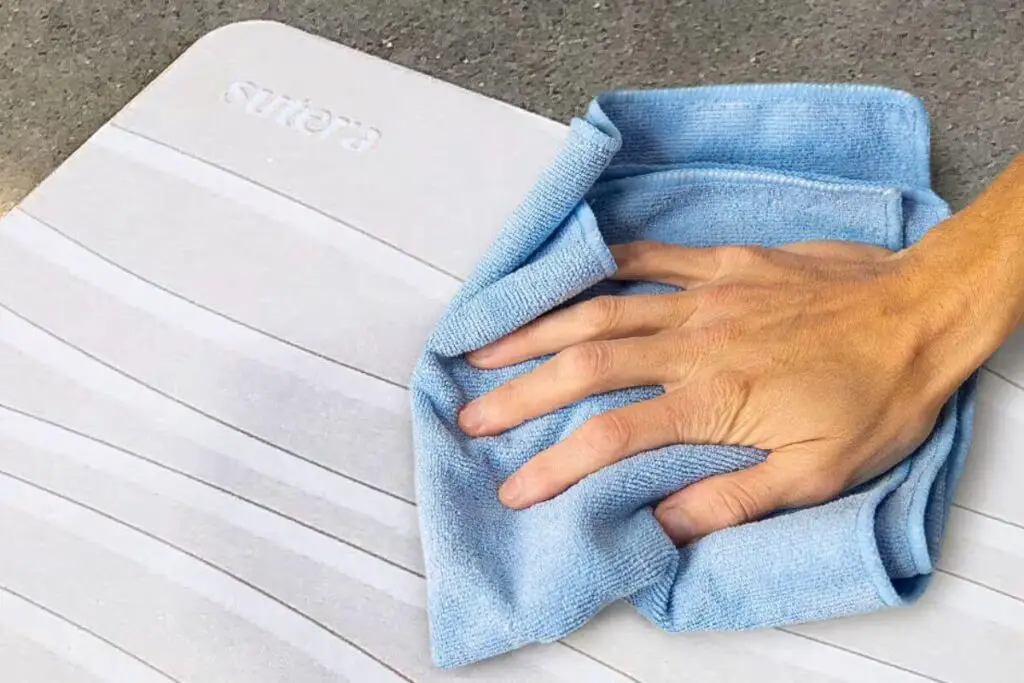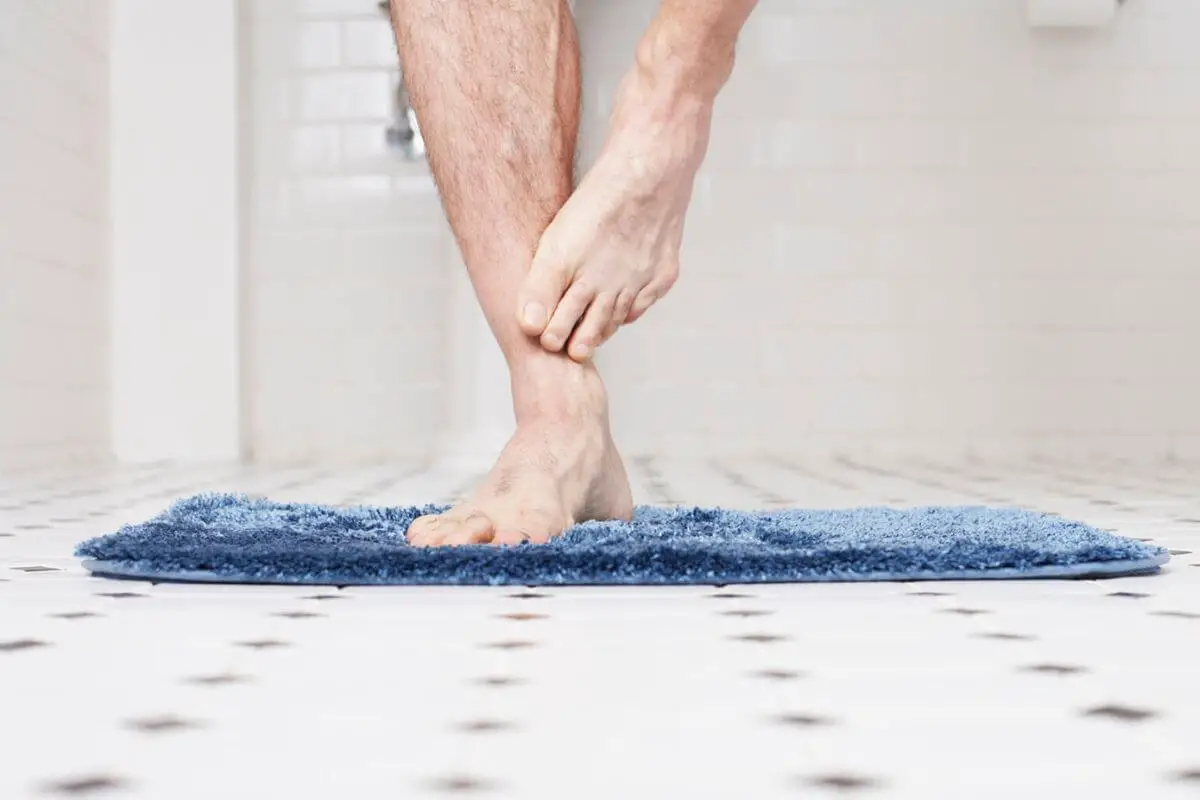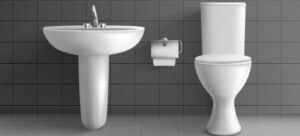Stone bath mats are not only functional but also add a touch of elegance to your bathroom. Crafted from natural stones such as pebbles, marble, or slate, these mats provide a unique and comfortable surface for your feet. To maintain their beauty and hygiene, regular cleaning is essential. In this comprehensive guide, we’ll walk you through the steps to clean your stone bath mat effectively and keep it looking pristine.
Why Cleaning Your Stone Bath Mat Matters
Cleaning your stone bath mat is not just about aesthetics. It’s also crucial for hygiene and safety. Over time, soap scum, mold, and mildew can accumulate on the surface, making it slippery and unattractive. A well-maintained stone bath mat not only enhances the appearance of your bathroom but also prevents accidents due to a slippery surface.
Cleaning Supplies You’ll Need
Before you start cleaning your stone bath mat, gather the necessary supplies:

Bristle brush or soft scrubbing brush:
This will help remove debris and stains without scratching the stone.
Mild detergent or stone-specific cleaner:
Choose a gentle, non-acidic cleaner to avoid damaging the stone.
Warm water:
You’ll need this for cleaning and rinsing.
White vinegar:
Effective for tackling mineral deposits and mold.
A bucket or basin:
To mix your cleaning solution.
Soft cloth or sponge:
For gentle scrubbing and wiping.
Rubber gloves:
To protect your hands from cleaning chemicals.
Step-by-Step Cleaning Process
Follow these steps to clean your stone bath mat effectively:
Step 1: Remove the Mat
Carefully lift the stone bath mat out of your shower or bathtub. This makes it easier to clean and prevents the spread of dirt and cleaning solution to other bathroom surfaces.
Step 2: Shake and Scrub
Give the mat a good shake to remove loose debris, like sand or hair. Then, use a bristle brush or soft scrubbing brush to scrub away any remaining dirt or stains. Be gentle to avoid scratching the stone.
Step 3: Prepare the Cleaning Solution
In a bucket or basin, mix warm water with a small amount of mild detergent or a stone-specific cleaner. Follow the product’s instructions for the appropriate dilution. You can also add a few tablespoons of white vinegar for additional cleaning power.
Step 4: Scrub the Mat
Dip the brush or a soft cloth into the cleaning solution and gently scrub the entire surface of the stone bath mat. Pay special attention to any stained or soiled areas. Avoid using abrasive materials or strong chemicals, as they can damage the stone.
Step 5: Rinse Thoroughly
After scrubbing, rinse the stone bath mat with warm water to remove any cleaning solution residue. Make sure to rinse it completely to avoid leaving behind any soap or cleaner residue.
Step 6: Dry and Reinstall
Place the clean mat on a towel or hang it to dry thoroughly. It’s crucial to ensure the mat is completely dry before reinstalling it in your bathroom to prevent mold growth.
Preventive Maintenance
To extend the life of your stone bath mat and minimize the need for deep cleaning, consider these preventive measures:
Regularly shake out the mat:
A quick shake after each use can remove loose debris and prevent it from accumulating.
Hang it up:
After each use, hang the mat in a well-ventilated area to allow it to air dry, reducing the chances of mold growth.
Clean promptly:
Deal with any spills, soap scum, or stains as soon as they occur to prevent them from becoming more stubborn over time.
By following these cleaning and maintenance tips, your stone bath mat will remain a beautiful and safe addition to your bathroom, providing comfort and style for years to come.
How to Handle Stubborn Stains
Sometimes, despite your best efforts, stubborn stains may still persist on your stone bath mat. Here are some additional tips for handling specific types of stains:
Soap Scum:
Soap scum can accumulate on the stones, making your mat appear cloudy. To remove soap scum, mix a solution of equal parts water and white vinegar. Gently scrub the affected areas with a soft cloth or sponge. Rinse thoroughly with water and dry the mat as usual.
Mold and Mildew:
If your stone bath mat is prone to mold or mildew growth, it’s crucial to address it promptly. Create a mixture of one part white vinegar and one part water. Apply this solution to the affected areas, allowing it to sit for about 10-15 minutes. Then, scrub the mold or mildew with a brush or cloth and rinse thoroughly.
Mineral Deposits:
Mineral deposits from hard water can leave unsightly marks on the stones. To remove these deposits, make a paste using baking soda and water. Apply the paste to the affected areas and gently scrub with a soft cloth. Rinse and dry your mat as usual.
Sealing Your Stone Bath Mat
To further protect your stone bath mat and make it easier to clean in the future, consider sealing it. Stone sealers create a protective barrier that repels water and prevents stains. Before applying a sealer, make sure your stone bath mat is thoroughly cleaned and completely dry. Follow the sealer manufacturer’s instructions for the best results.
When to Replace Your Stone Bath Mat
With proper care, a stone bath mat can last for a long time. However, there may come a point when it’s no longer salvageable. Signs that it’s time for a replacement include:
Cracked or chipped stones:
If the stones are damaged, it can create an uncomfortable surface and make cleaning difficult.
Deeply ingrained stains:
Some stains may be impossible to remove, making the mat unsightly.
Mold or mildew infestation:
If mold or mildew keeps coming back despite your cleaning efforts, it may be time for a new mat.
Excessive wear and tear:
Over time, the stones can wear down, losing their comfortable texture.
When considering a replacement, choose a mat made from the same or similar type of stones for consistency in your bathroom decor.
By following these cleaning, maintenance, and preventive tips, your stone bath mat will not only enhance the aesthetics of your bathroom but also provide a safe and comfortable surface for years to come. Proper care ensures that you continue to enjoy the beauty and functionality of this unique bathroom accessory.
Certainly, here are some frequently asked questions (FAQs) regarding cleaning a stone bath mat:
FAQS
1. How often should I clean my stone bath mat?
Cleaning frequency depends on usage. As a general guideline, give your stone bath mat a thorough cleaning every two to four weeks. However, you may need to clean it more often if it sees heavy use.
2. Can I use abrasive materials or strong chemicals to clean my stone bath mat?
No, it’s not recommended. Abrasive materials and strong chemicals can damage the stone’s surface. Stick to soft brushes, mild detergents, and stone-specific cleaners to protect your mat.
3. Can I put my stone bath mat in the washing machine?
No, stone bath mats should not be machine washed. They are best cleaned by hand to prevent damage.
4. What should I do if my stone bath mat becomes discolored?
Discoloration on a stone bath mat can occur due to minerals in the water or soap residues. Try using a solution of equal parts white vinegar and water to gently clean the discolored areas. Rinse thoroughly and dry.
5. Is it necessary to seal my stone bath mat?
Sealing your stone bath mat is optional but can be beneficial in preventing stains and making future cleaning easier. Follow the manufacturer’s instructions for applying a stone sealer.
6. How do I prevent mold and mildew growth on my stone bath mat?
To prevent mold and mildew, ensure your stone bath mat is thoroughly dried after each use. Hanging it in a well-ventilated area is key. Regular cleaning and proper maintenance also reduce the risk of mold and mildew.
7. Can I use my stone bath mat immediately after cleaning?
It’s best to allow your stone bath mat to dry completely before using it again. This prevents moisture from getting trapped underneath, reducing the risk of mold growth.
8. What should I do if my stone bath mat is cracked or chipped?
If your stone bath mat has cracked or chipped stones, it’s advisable to replace it. Cracked stones can be uncomfortable to step on and are difficult to clean effectively.
By following these guidelines and addressing common questions, you can maintain your stone bath mat’s appearance and functionality, ensuring it remains a valuable addition to your bathroom decor.



